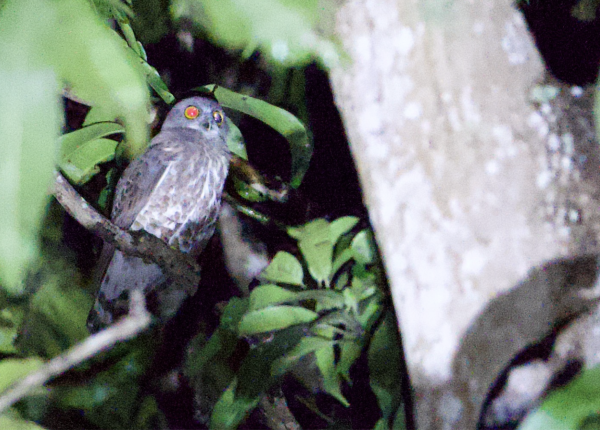Did You Know?
- This owl is also known as the Brown Hawk-Owl
- There are nine recognized subspecies of this owl
How The Peregrine Fund is Helping
Though The Peregrine Fund does not work directly with the Brown Boobook currently, our efforts in scientific research, habitat conservation, education, and community development help conserve birds of prey around the world. We also supply literature to researchers from our avian research library, which helps scientists around the world gather and share important information on raptor conservation. Through the Global Raptor Impact Network, we help monitor and conserve the world’s raptors, while giving raptor researchers tools to more efficiently conduct their own studies while contributing to a global program.
Where They Live
The Brown Boobook is found throughout much of Southeast Asia including in parts of India, Sri Lanka, Thailand, and Borneo. It can be found in lowland habitats including rainforests, mangroves and treed residential areas, local parks and gardens, and plantations. It tends to inhabit areas that are close to streams or other waterways.
What They Do
The Brown Boobook is a beautiful owl with large, yellow eyes. If you read the "Did you know" section above, you also now know that they are also known as Brown Hawk-owls. They were given this name likely because their longish tails and inconspicuous facial-disk lend them a hawk-like appearance. Like most owls, they forage at dusk and at night. During the day, they roost under dense canopy or among tangles.
Why They Need our Help
Thankfully, this lovely owl is categorized as a species of Least Concern. However, information on the species' population trends is lacking and it is likely that their numbers are declining, especially in response to loss of habitat.
What They Eat
The Brown Boobook feeds on a number of small animals including invertebrates such ass beetles, grasshoppers moths, dragonflies, and crabs. It will also prey on frogs, lizards, and small mammals, including bats, and small birds. When on the hunt, typically at forest edges, it often sits on an open perch, pouncing on prey on the ground. It will also capture insects in the air.
Nests, Eggs, and Young
Very little is know about the breeding habits of the Brown Boobook. Here is what we know: they, like many owl species, nest in tree cavities. The female will usually lay around 2 eggs, which must be incubated for at least 25 days. The young remain in the nest for about 4 weeks before fledging. Apart from this, very little information exists.
Brown Boobook and the World Center for Birds of Prey
Though our visitor center at our World Center for Birds of Prey is very far from the Brown Boobook's distribution, we do have several owls among our avian ambassadors, including an Eurasian Eagle-owl and a Verreaux's Eagle-owl. This is a great chance to see owls up close and learn about the wonderful and interesting adaptations they have in order to survive in their respective habitats. There is also a touch table with owl feathers and other natural objects available for exploration. Around the center, it is possible to see Barn Owls and Northern Saw-whet Owls.
References:










